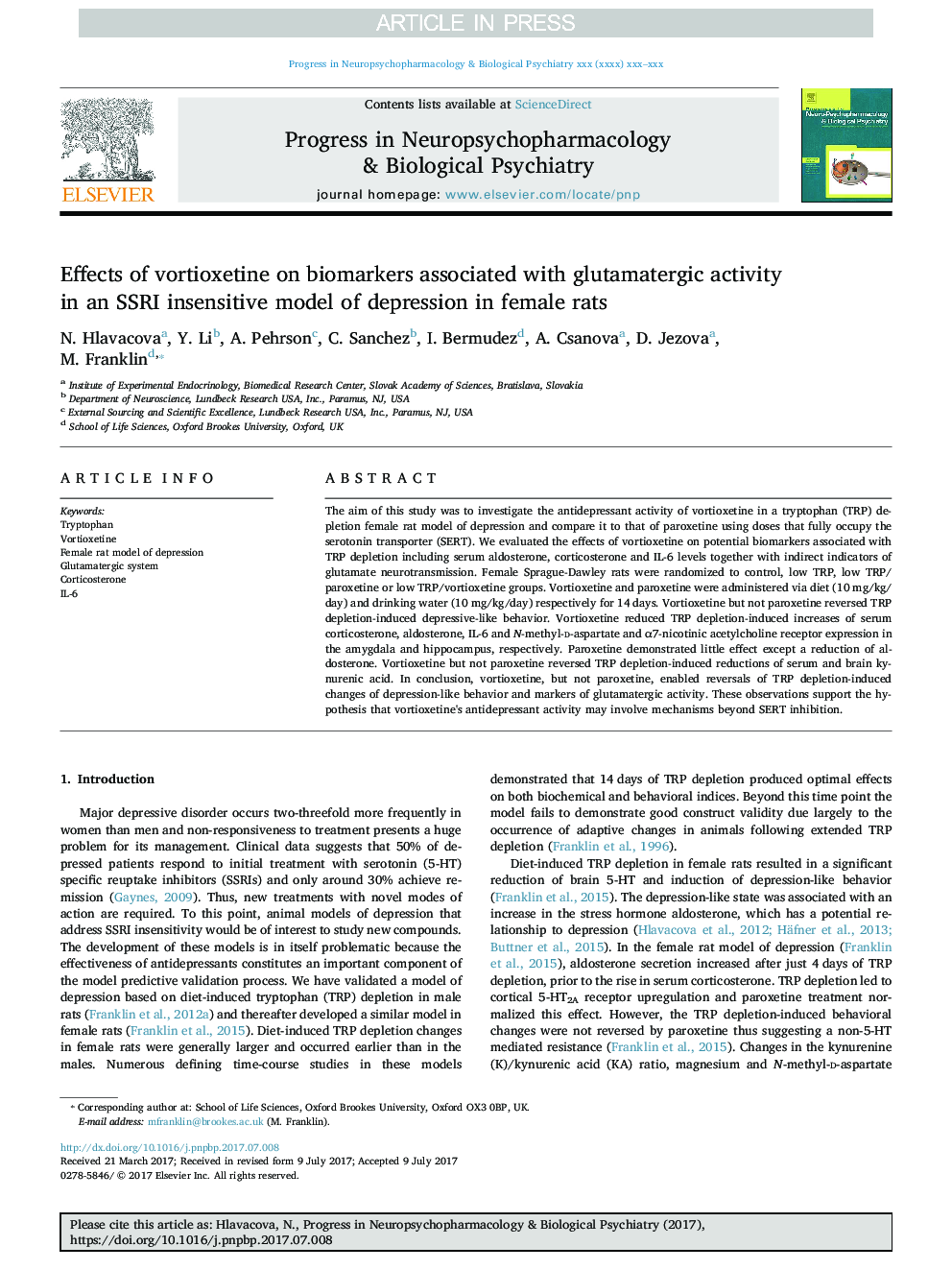| Article ID | Journal | Published Year | Pages | File Type |
|---|---|---|---|---|
| 8537519 | Progress in Neuro-Psychopharmacology and Biological Psychiatry | 2018 | 7 Pages |
Abstract
The aim of this study was to investigate the antidepressant activity of vortioxetine in a tryptophan (TRP) depletion female rat model of depression and compare it to that of paroxetine using doses that fully occupy the serotonin transporter (SERT). We evaluated the effects of vortioxetine on potential biomarkers associated with TRP depletion including serum aldosterone, corticosterone and IL-6 levels together with indirect indicators of glutamate neurotransmission. Female Sprague-Dawley rats were randomized to control, low TRP, low TRP/paroxetine or low TRP/vortioxetine groups. Vortioxetine and paroxetine were administered via diet (10 mg/kg/day) and drinking water (10 mg/kg/day) respectively for 14 days. Vortioxetine but not paroxetine reversed TRP depletion-induced depressive-like behavior. Vortioxetine reduced TRP depletion-induced increases of serum corticosterone, aldosterone, IL-6 and N-methyl-d-aspartate and α7-nicotinic acetylcholine receptor expression in the amygdala and hippocampus, respectively. Paroxetine demonstrated little effect except a reduction of aldosterone. Vortioxetine but not paroxetine reversed TRP depletion-induced reductions of serum and brain kynurenic acid. In conclusion, vortioxetine, but not paroxetine, enabled reversals of TRP depletion-induced changes of depression-like behavior and markers of glutamatergic activity. These observations support the hypothesis that vortioxetine's antidepressant activity may involve mechanisms beyond SERT inhibition.
Related Topics
Life Sciences
Neuroscience
Biological Psychiatry
Authors
Hlavacova N., Li Y., Pehrson A., Sanchez C., Bermudez I., Csanova A., Jezova D., Franklin M.,
